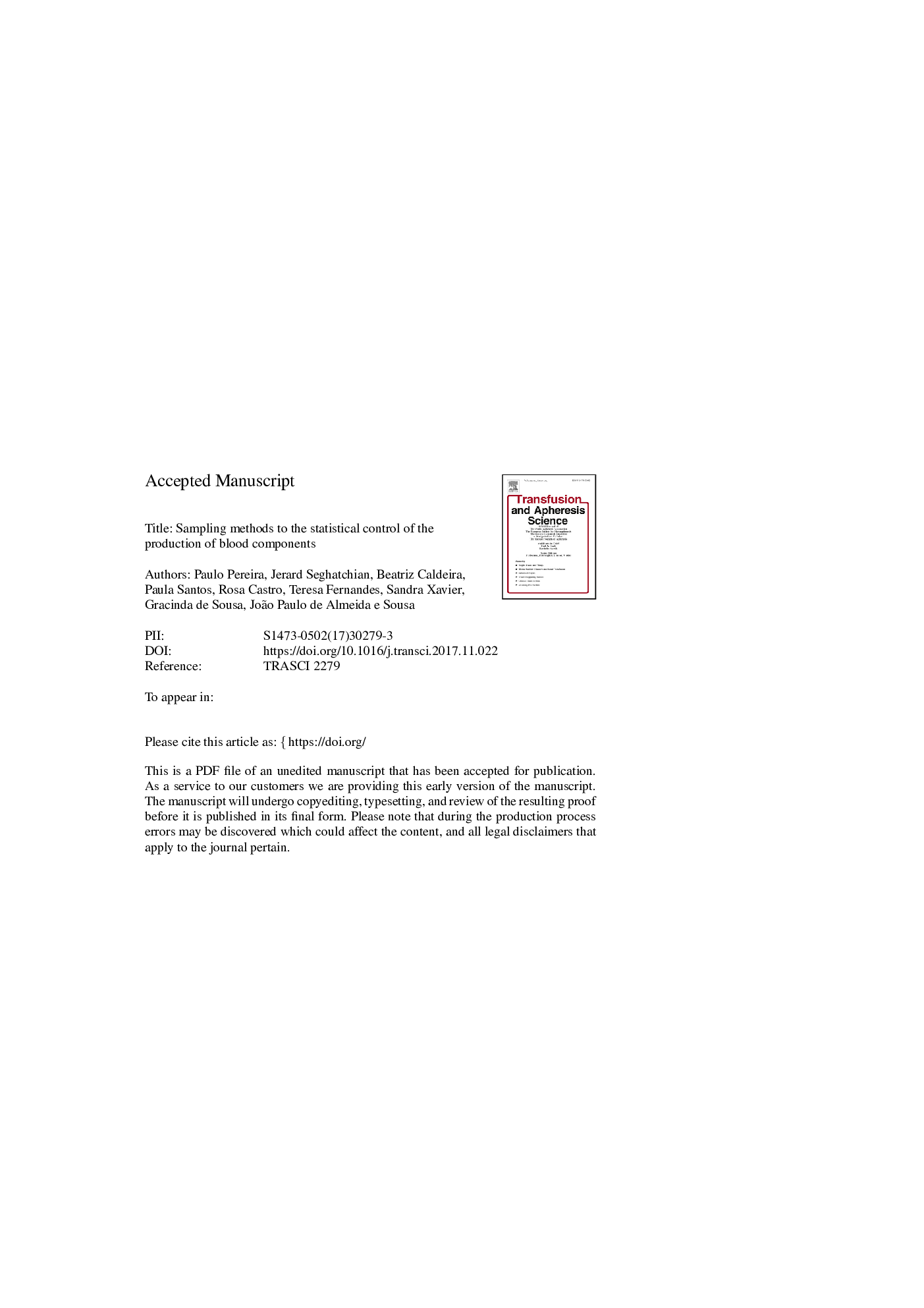| Article ID | Journal | Published Year | Pages | File Type |
|---|---|---|---|---|
| 8735119 | Transfusion and Apheresis Science | 2017 | 23 Pages |
Abstract
The control of blood components specifications is a requirement generalized in Europe by the European Commission Directives and in the US by the AABB standards. The use of a statistical process control methodology is recommended in the related literature, including the EDQM guideline. The control reliability is dependent of the sampling. However, a correct sampling methodology seems not to be systematically applied. Commonly, the sampling is intended to comply uniquely with the 1% specification to the produced blood components. Nevertheless, on a purely statistical viewpoint, this model could be argued not to be related to a consistent sampling technique. This could be a severe limitation to detect abnormal patterns and to assure that the production has a non-significant probability of producing nonconforming components. This article discusses what is happening in blood establishments. Three statistical methodologies are proposed: simple random sampling, sampling based on the proportion of a finite population, and sampling based on the inspection level. The empirical results demonstrate that these models are practicable in blood establishments contributing to the robustness of sampling and related statistical process control decisions for the purpose they are suggested for.
Related Topics
Health Sciences
Medicine and Dentistry
Hematology
Authors
Paulo Pereira, Jerard Seghatchian, Beatriz Caldeira, Paula Santos, Rosa Castro, Teresa Fernandes, Sandra Xavier, Gracinda de Sousa, João Paulo de Almeida e Sousa,
